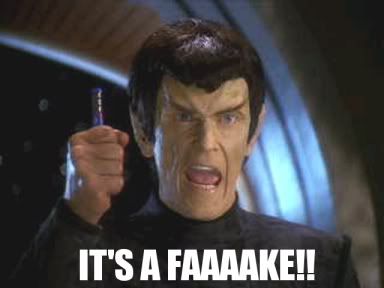This started in March when Zen Honeycutt at Moms Across America made this blog post. She claimed to have a "stunning report" demonstrating a nutritional difference between GMO and non-GMO corn, and that:
These are exactly the deficiencies in a human being that lead to susceptibility to sickness, disorders and cancer.This bizarre claim is backed up by the (false) explanation that:
Glyphosate draws out the vital nutrients of living things.The post also claims that:
Formaldehyde showed to be toxic in ingestion to animals. This corn has 200X that!Scary, right? Well, turns out, this "stunning report" was published in an advertisement produced by ProfitPro® to peddle their ManurePlus™ product. They were using false advertising to scare farmers into signing up for their program.
How do I know the data in this ad is false?
- It has nothing to do with the nutritional contents of corn! The analysis compares soil samples from two adjacent fields. See footnote 1 on the original document, posted by Zen Honeycutt.
- Not convinced by #1? The percent "Organic matter" for both GMO and non-GMO corn is under 3%. Whatever they are measuring, it isn't the body of a plant, which is, by definition, 100% organic matter! Clearly, this table is taken from a soil report.
- The GMO numbers have been tampered with by blindly lowering all the numbers.
The (unintentional) result is that some quantities, which represent the percent value of something called Base Saturation, don't add up to 100%. This is undeniable proof of forgery.
- The report measures "Anaerobic biology" in parts per million (ppm), which makes no sense. Anaerobic organisms are identified by growing them in liquid culture. There is no method for measuring the mass fraction of living Anaerobic organisms in a soil sample. This line was obviously added by someone who did not pass High School chemistry (or biology).
- The comically low Cation Exchange Capacity has clearly been lowered to make the GMO soil appear impoverished. The fraudster was so lazy, they used the value 3 meq per 100g, a value typical of sand. Farmers don't grow corn in sand.
- The report boasts an impossible formaldehyde concentration of 200 ppm in the GMO soil. Formaldehyde does not accumulate alkaline soil, because it is broken down by the Cannizzaro reaction. The report shows the GMO pH to be 7.5 (alkaline), which is incompatible with such a huge amount of formaldehyde.
- The lazy hoaxer was not feeling particularly creative when faking the "Available Energy" of GMO corn at 100 µS, which is precisely the recommended minimum value.
- Only one of the numbers has three significant digits. There are no error bars. Real science doesn't look like this. It's a fake!

GMO corn has the same nutritional value as non-GMO corn. Glyphosate does not draw out vital nutrients. There is no formaldehyde in GMO corn.
Zen Honeycutt was fooled. ProfitPro sells cow shit with bullshit. GMO corn is not going to hurt you.
But eating farm soil might hurt you. Don't eat soil.

